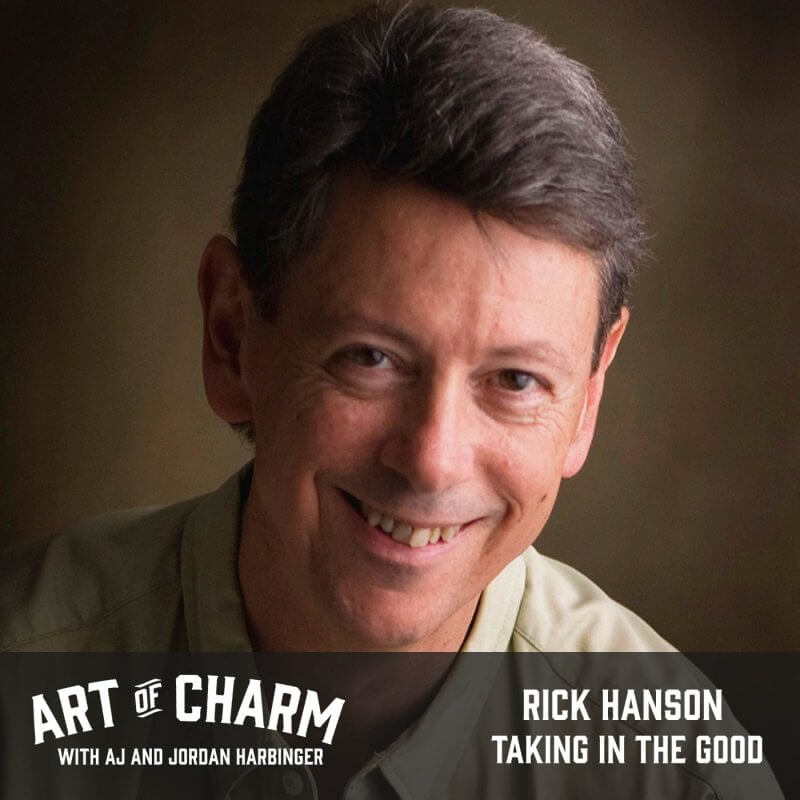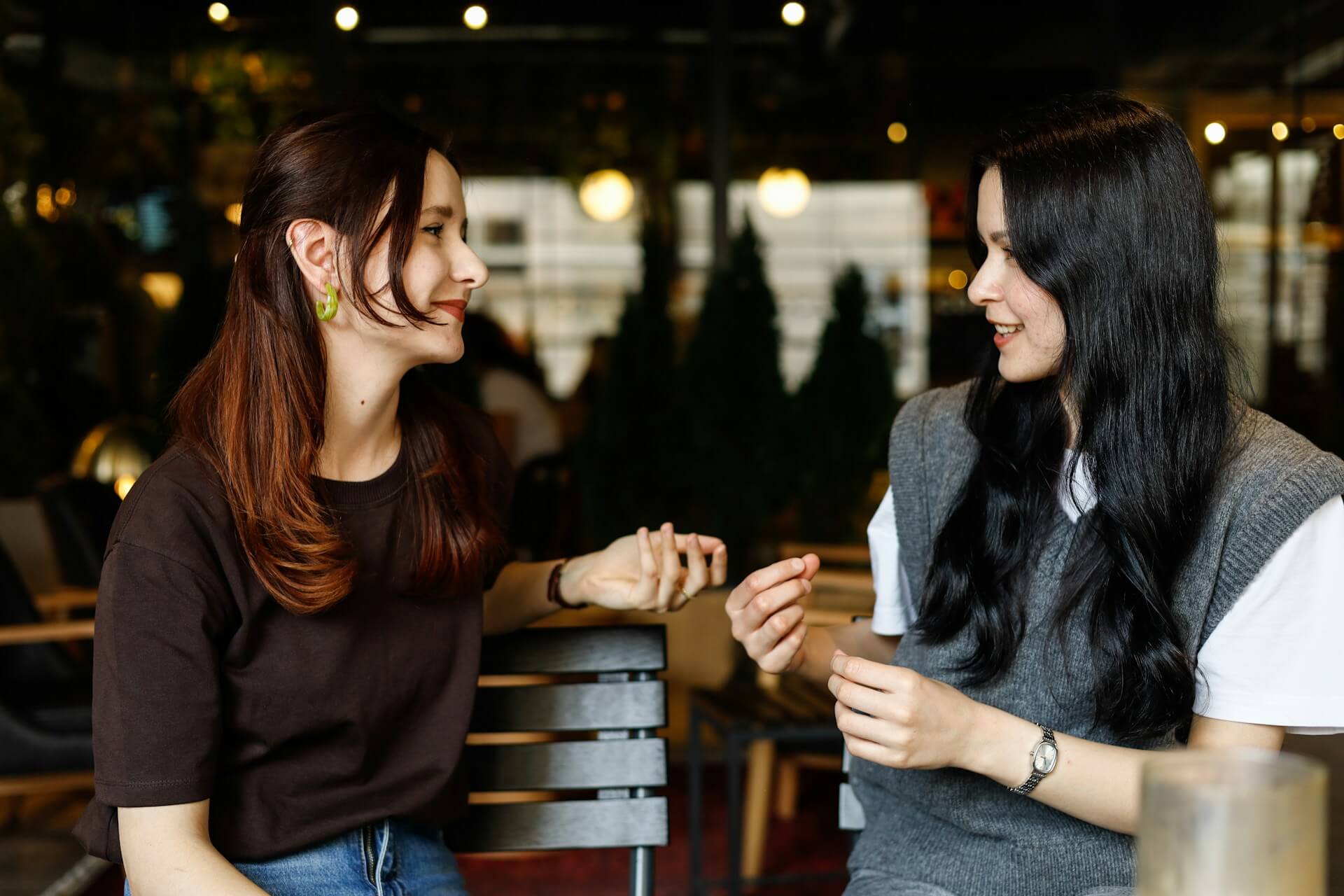Self-doubt is normal, but it can be overwritten. Harness the innate ability of the confident brain to grow and learn over time to change your life for the better.
“The brain is velcro for the bad and teflon for the good.” -Rick Hanson
The Cheat Sheet:
- What’s the difference between a neuropsychologist and a run-of-the-mill psychologist?
- Did you know you have a lizard, a mouse, and a monkey inside of your skull?
- Evolutionary psychology tells us the brain is velcro for the bad and teflon for the good. How can we overcome this negativity bias?
- From state to trait: how to encode beneficial experiences to start rewiring the brain.
- Learn how to follow the HEAL steps to make sure your brain is Taking in the Good.
- And so much more…
[aoc-subscribe]
We all have bad days, but we all have good days, too. Which ones do you tend to remember? If you can list more bad days off the top of your head than good, you’re not alone — and you’re not abnormal. Wouldn’t it be great if the positive experiences in your life took a more prominent position in your power of recall? Not only would it be great, it would be life-changing.
Neuropsychologist and New York Times bestselling author Rick Hanson joins us for this episode of The Art of Charm to tell us a little bit about what makes our brains tick, why we’re naturally wired to learn more from our negative rather than positive experiences, and how we can consciously rewire ourselves to be happier and more confident with minimal effort.
More About This Show
Is the term “neuropsychologist” a bit of a redundancy (aren’t psychologists already studying the brain — the control center of the human neural system)?
“You would totally think so,” Rick Hanson explains, “but most psychologists think about the mind as if it’s lifted off from its animal basis. They know vaguely that there’s got to be some hardware underneath all that software, but they don’t take it into account. Someone who’s a neuropsychologist thinks about the mind, in a way, from the bottom up. For example, the impact of the fact that each one of us has a certain lizard, mouse, and monkey inside our skull — remnants of evolution over 600 million years of building a brain.”
What especially interests Rick is how our brains have such an easy time learning — and overlearning — from our painful, negative experiences, but it really takes work to get the positive experiences to stick and help us develop confidence and self-worth. But the more we learn about how the hardware and software work together, the more control we have over changing this.
Stress is one example to which we can all relate, and it perfectly illustrates this connection. “When we’re irritated or frazzled or exasperated or anxious or we feel hurt or we’re disappointed…all that releases the same stress hormones and drives other processes in the physical body that evolved to enable our ancestors to run away from saber-toothed [cats].” In other words, the negativity bias that’s ingrained in all of us is what allowed us to quickly identify very real dangers that could kill us. Because this trait allowed us to survive, it’s been passed along through generations of survivors and brought us to where we are today.
Developing what Rick calls a confident brain in spite of this programming takes some work, but it’s worthwhile work. What Rick means by a confident brain is:
A brain that is resilient and knows that it’s resilient from the inside out. Unpleasant things happen and we feel them. “I’m not talking about positive thinking here,” Rick clarifies. “I don’t believe in positive thinking. I believe in realistic thinking! You want to see the whole mosaic of reality. You basically can bounce back and move forward from things that are hard.” This builds up resilience over time.
A brain that is mindful. “If you’re not aware of what you’re experiencing inside and you’re not really aware of the outer world, of course you’re not going to have confidence,” says Rick, “because you’re not tuned in to what’s really going on.”
A brain that is repeatedly, as Rick calls it, Taking in the Good. This is when you’re deliberately internalizing beneficial experiences so that you gradually — by way of experience-dependent neuroplasticity — hardwire critical inner strengths and mental resources into your brain’s thinking patterns. As Rick puts it: “Neurons that fire together wire together!” By repeatedly extending your beneficial experiences — even the regular, mild ones can be useful for this purpose — you feel more and more confident instead of insecure. “You feel strong instead of anxious,” says Rick. “You feel grateful instead of despairing and depressed.”
And while Rick also warns that this isn’t an overnight procedure but an ongoing path of personal growth, it’s extremely practical in nature. The Taking in the Good process is based on four simple steps that anyone can use on a daily basis — Rick calls them the HEAL steps:
Have a positive experience. Look for good facts, and turn them into good experiences.
Enrich it. Enrich and enjoy the experience. Stay with the experience and really let it sink into you.
Absorb it. Absorb the experience into yourself.
Link positive and negative material. Link positive and negative experiences, eventually replacing bad with good.
“There’s quite a lot of value looking back on the day and pulling up two or three episodes and rewinding them in the memory box,” Rick says. “Rerunning that loop is going to get those neurons firing again…every day has half a dozen — at least — opportunities like that. Don’t waste ’em.”
If you want to learn more about how you can take in the good and redirect your brainpower toward a more constructive and fulfilling outlook on life, Rick is offering Art of Charm listeners a free, seven-day trial and 15% off monthly payments if you decide to stay on by signing up here and using the coupon code CHARM15!
Listen to this episode of The Art of Charm to learn more about how our brains work to satisfy our three basic needs of safety, satisfaction, and connection, what we can do to register and hold on to positive moments instead of letting them slip away, learning that negative experiences often have positive outcomes, how to go from state to trait, and more.
THANKS, RICK HANSON!
Resources from this episode:
The Foundations of Well-Being Program
Books by Rick Hanson
The Art of Charm bootcamps
You’ll also like:
-The Art of Charm Toolbox
-Best of The Art of Charm Podcast
On your phone? Click here to write us a well-deserved iTunes review and help us outrank the riffraff!




